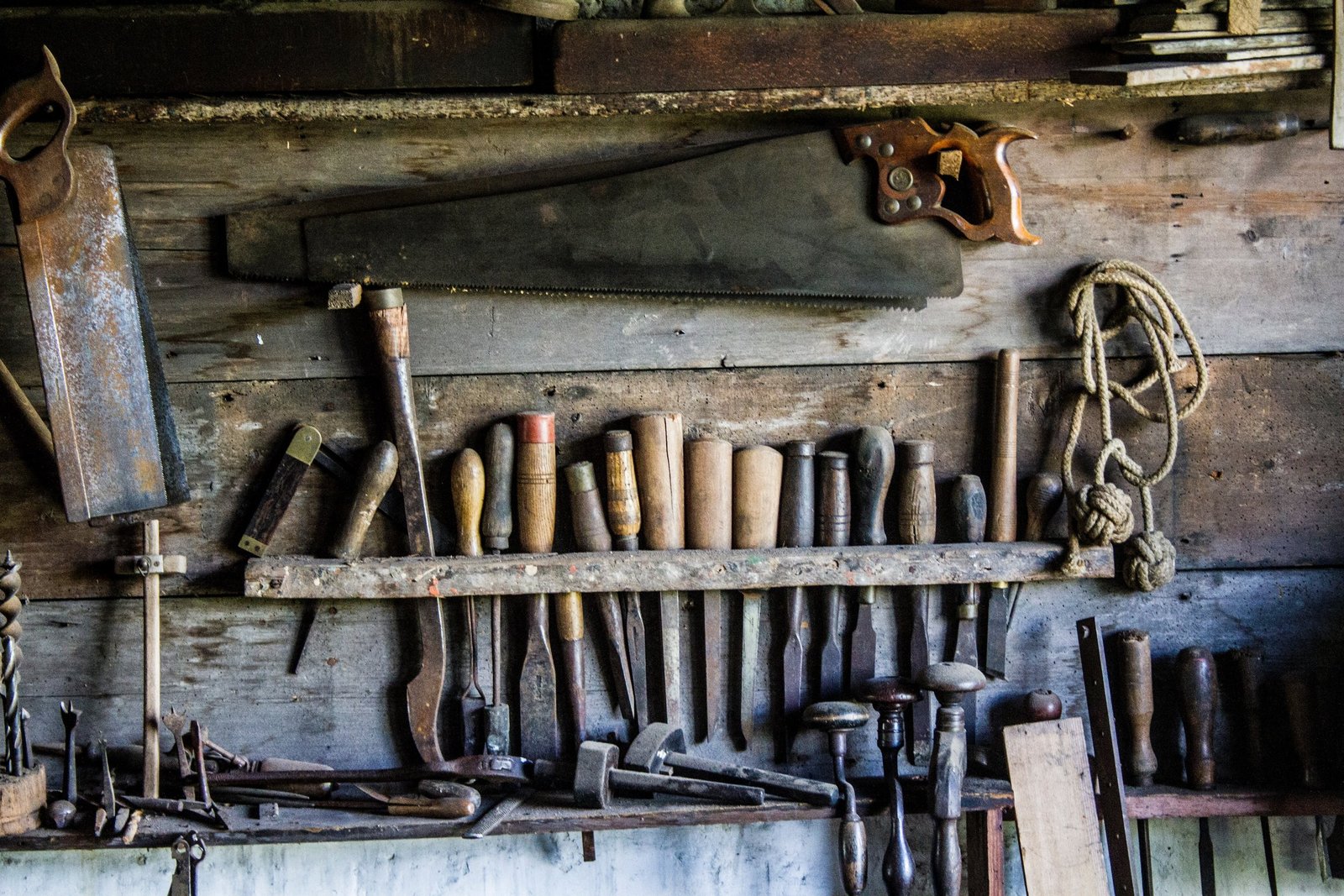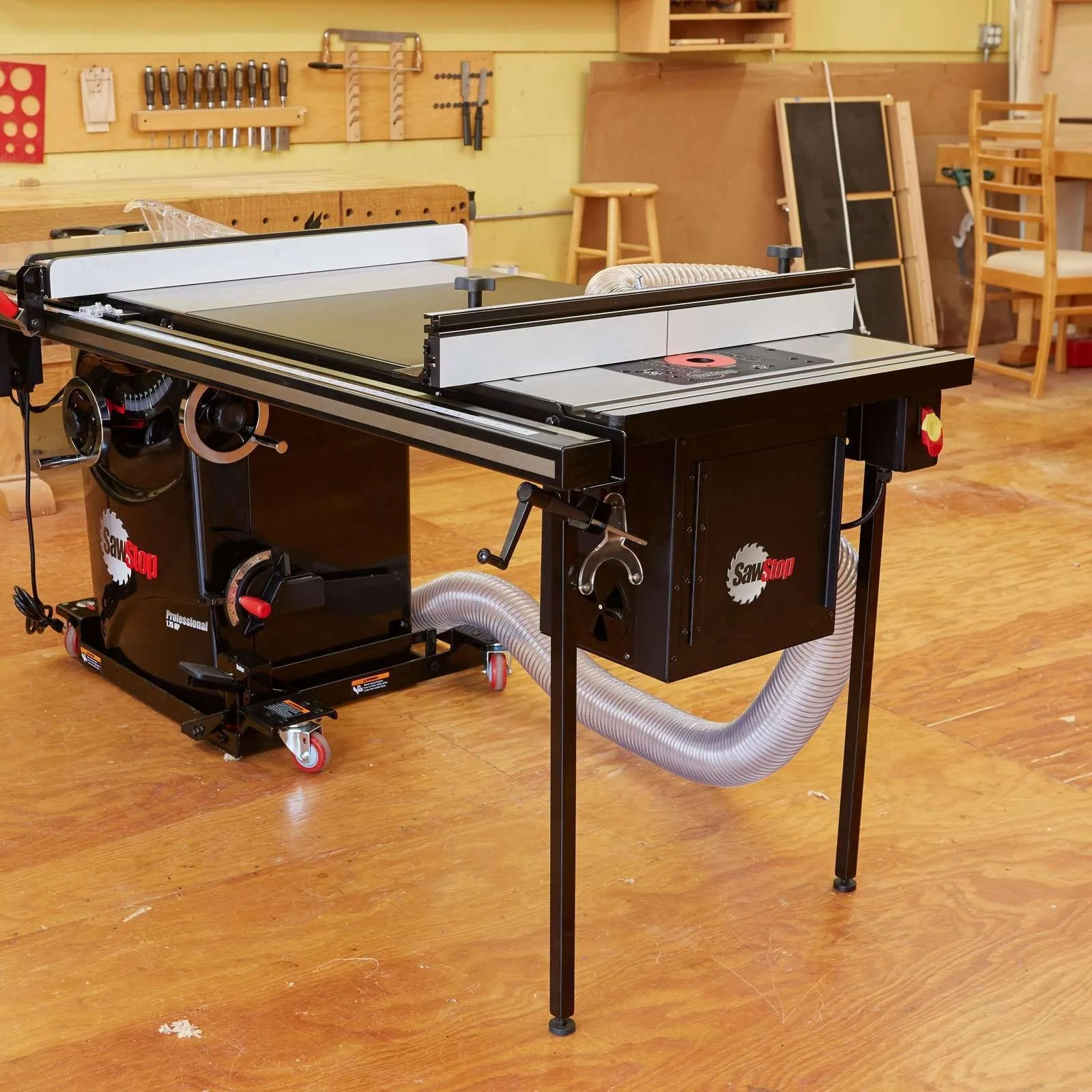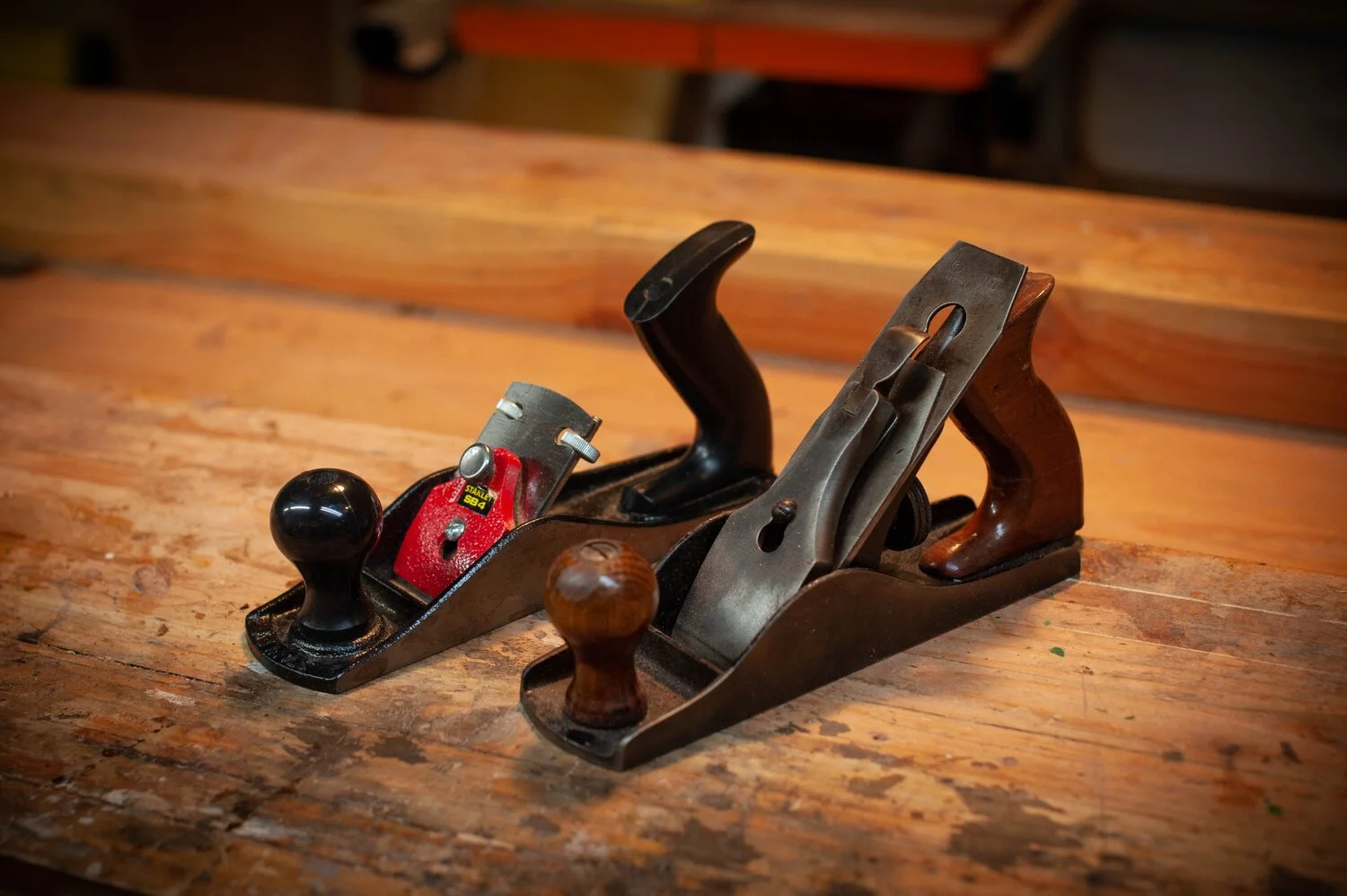So we’ve all been there before you’re browsing around on YouTube and you click on a beautiful thumbnail with a fancy piece of furniture in it. Then two minutes into the video you realize that the person has 20 tools you didn’t even know existed, 10 jigs that you need to build and about 1000 ft.² of shop space that you don’t have. As you go back into your little 200 x 200 ft.² shop, look around at your collection of tools do you realize that you really can’t be a woodworker unless you have a giant cast-iron cabinet saw, at least a 13 inch planer, a jointer, a bandsaw, a router, a palm router and a crosscut sled with T tracks.
>
“you really can’t be a woodworker unless you have a giant cast-iron cabinet saw, at least a 13 inch planer, a jointer, a bandsaw, a router, a palm router and a crosscut sled with T tracks.”
For those of you who might be on the fence as to whether or not you can be a woodworker without these tools, I want to tell you that I was in the exact same boat a few years ago. After watching countless build video’s I concluded that all I needed to be a “real woodworker” was a tablesaw.
While we would all love to have a big beautiful SawStop on our shop it’s not always feasible.
The problem was that I couldn’t afford one of those big fancy cast-iron cabinet saws, a contractor saw or for that matter even the Dewalt brand, so I opted for the cheapest tablesaw that I could buy which happened to be the Harbor Freight. I believe it was something around $150. As the initial excitement of my purchase wore off my heart began to sink a little as I put together the final pieces and slid the rickety fence back-and-forth, I realized that the machine I had seen in so many videos was not the same machine I had just bought, they weren’t even remotely in the same class. I figured they would be more or less the same but I was sorely mistaken. Everytime I wanted to make a rip cut I had to take out the square in a line both the front and the back of the fence which took at least a couple minutes. After concluding that maybe I just need to build a crosscut sled because really I’m not doing that many rip cuts. Since I didn’t have a miter saw I’ll just build myself a crosscut sled. After building a crosscut sled and cutting a few pieces, the tablesaw sat unused for the better part of a few months and really my motivation to do woodworking kind of went away. I was relying on my tools 100% to make the projects I wanted to do, and since my tools or my workspace weren’t really adequate I just kind of gave up.
My friends woodshop I took over for several weeks as I built my workbench
That is until something changed, that something was a project that would change the way I looked at woodworking. At the time my brother had been woodworking for longer and had quite a bit more experience. He used to wax poetic about hand tools, how great hand tools were, collecting old hand tools, restoring old hand tools and frankly I really didn’t understand the appeal. Most of the videos that I’d seen relied on the table saw and other big power tools, routers, planers, a huge assortment of router bits and I didn’t really understand why someone would bother with hand tools. I begrudgingly took his advice and decided I was finally going to build myself a proper workbench. Now prior to this I was trying to do some projects on the ground in front of my house and occasionally I was using my friend’s workshop space which was nice but it wasn’t mine and I didn’t really feel like I could take on any big projects there without intruding on his space. But there was a several week window where I had my friends’ workshop space mostly to myself, I set my sights on building the Paul Sellers style workbench and went all in. The only tools that are really needed are a saw, a plane, a few chisels, a drill and some screwdrivers. Not having a clue what I was doing when it came to hand planes, I went to the local miners and picked up a Stanley #4 hand plane. Little did I know that this new style Stanley #4 hand plane was almost nothing like the original design. For one it didn’t have a chip breaker, it didn’t have a frog, it had a single blade adjusted by two thumb screws, needless to say I was not very impressed.
Side by side
New version of the Stanley handplane next to the classic design.
Adjusting the blade protrusion proved to be quite the challenge, the two thumb screws made setting the blade square difficult and impossible to do so on the fly as you would with classic Stanley hand plane. To make matters worse the blade didn’t come sharp and I had little to no experience sharpening tools much less plane irons. After struggling with this tool for quite some time, I got it to kind of work, I mean it was taking off shavings, albeit not the most consistent ones. A few days into this build I called up my brother and told him a little bit of what was going on, he quickly told me to go buy a used the classic style hand plane on eBay and just sharpen the blade and I would have a much better tool. Again, I begrudgingly took his advice and ordered myself a used #5 Stanley hand plane. When it came in, the difference between the new model and the old model couldn’t have been clearer. For one the old model had a thumb screw for adjusting the blade protrusion, number two you could actually adjust the blade iron without loosening the whole blade assembly and potentially wrecking the depth setting the build overall was much heavier and much sturdier, wooden handles actually felt good to hold and didn’t give you blisters after an hour of heavy use. I finally spent the time to learn how to properly sharpen and with each sharpening session I seem to get a little bit better of a result.
Shavings for days
At least shavings are a lot easier to clean up than saw dust.
I was able to set the plane and actually make it take wispy thin shavings and I found myself enjoying the sound of the plane over the wood enjoying the smell of the pine when suddenly something clicked. I think at that moment I understood a little bit of what my brother was talking about when he was talking about hand tools. The work just seemed more enjoyable, now fast forward to today and of course I don’t exclusively use hand tools but I love when I have an excuse to reach for anyone of my planes and I think there will be a part of me that will always love reaching for those razor sharp fine-tuned hand tools and taking a few shavings. There’s a flow that you get into when you don’t have to wear a dust mask, you don’t have to put on safety glasses and ear protection every time you want to power on a tool you can hear the sounds of your hand tools working you can feel it on the wood and you have that feedback between the tool, the wood and you.
Housing dado and wedge
The legs are housed in the apron and tightened with a wedge to account for seasonal expansion and contraction of the wood.
As I was reaching the completion of my bench I started to feel this sense of elation, I remember dry fitting it together to see how it will finally look. I still remember that day when I assembled it and it finally was standing in my workshop. I remember the pride I felt that I had actually built this thing, I had made every mortise, every tenon by hand, I had planed every inch and I had cut every 2 x 4. It was then that I understood that of course you could build this way faster with a mortising machine, a planer and a jointer but that doesn’t mean I couldn’t build it with my humble set of tools.
>
“I had made every mortise, every tenon by hand, I had planed every inch and I had cut every 2 x 4”
I think it was at that moment that I realized that I could be a woodworker with a handful of harbor freight chisels, a single Stanley #5 hand plane, a saw and a drill. It was that workbench that inspired me to build the next project, and the next project. It wasn’t the fact that I had purchased the perfect tool, it was the knowledge that I could complete a project with the tools I had and the confidence that I could build almost whatever I wanted with those tools. The next project I took on was an outdoor table. Now I wouldn’t say that this was a fine woodworking project but it gave me the opportunity to practice some more joinery and refine my sawing technique. This workbench build did more for my progress as a woodworker than anything I could have possibly purchased and ignited my ambition to take on more and more challenging projects. So to go back to this question, “can you be a woodworker without a table saw?” of course we know the answer is yes, but I want to say that there’s almost nothing you can’t build even if you’re lacking some tools that seem essential. There will always be bigger, better, faster more efficient tools, there will always be new templates, new jigs, new equipment but a real woodworker is someone who takes the tools he has and squeezes every last bit of potential out of them masters them, learns to care for them, ultimately he makes a bond with those tools one can only make through years of use.







